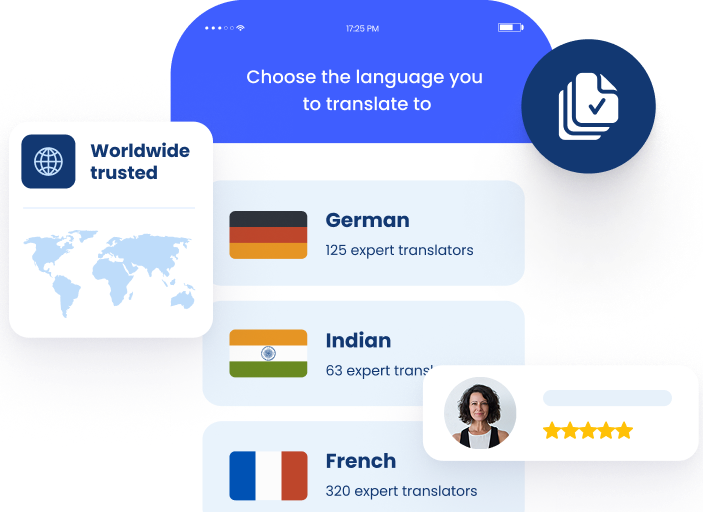Interpreter Services for Limited English Proficiency (LEP) Patients in Healthcare
Nearly 26 million people in the United States report speaking English less than “very well,” a figure that represents almost 9% of the population. In hospitals, this translates to millions of patients each year who struggle to understand discharge instructions, medication regimens, or informed consent discussions. Research shows LEP patients are more likely to experience adverse events and that those events cause more severe harm compared to English speakers.
For health systems, the challenge is not whether LEP patients exist but how to serve them safely and equitably. Treating language access as optional risks legal action, financial loss, and patient harm. Treating it as essential, by contrast, improves outcomes, reduces disparities, and strengthens trust.
The term “Limited English Proficiency” covers patients who self-report speaking English less than very well. While the definition is straightforward, the consequences of not addressing their needs are complex and costly. This article examines why interpreter services are indispensable, the legal obligations that govern them, the options hospitals have, and how organizations can build effective language access programs.

Why Interpreter Services are Essential for LEP Patients
Language barriers directly cause adverse events. LEP patients experience them more often, and 49.1% of these events cause harm, compared with 29.5% for English speakers. Errors stem from miscommunication, which is preventable.
Children face higher risk. Hospitalized children of LEP parents are nearly twice as likely to suffer medical errors. Consent also fails without clear language access; patients cannot make informed decisions when they cannot understand risks or alternatives.

Hospitals also face legal and financial risk.
- Violations of Title VI or Section 1557 can trigger lawsuits or civil penalties
- Longer stays and higher readmission rates occur when interpreters are not provided at admission or discharge
- One insurer reported $2.2 million in damages plus $2.7 million in legal costs from 35 language-related claims
How Interpreter Services Improve the LEP Patient Experience
Professional interpreters raise quality of care for LEP patients to levels comparable with English-proficient patients. Patients feel more trust when providers speak through interpreters, which leads to fuller histories and better diagnostic accuracy. Hospitals also see higher satisfaction scores when they rely on trained interpreters.
Health outcomes improve too. LEP patients with access to interpreters have better chronic disease management, reduced readmissions, and higher adherence to care plans. These benefits also support value-based contracts by aligning health equity goals with cost control.
Legal Requirements for Language Interpretation in Healthcare
Title VI of the Civil Rights Act bans discrimination based on race, color, or national origin. Courts include language access under “national origin.” Any hospital receiving federal funds must provide services without discriminating against patients with LEP.
Section 1557 of the ACA requires hospitals to provide free, timely, and accurate interpretation to every LEP patient they serve. Family members cannot serve as interpreters except in emergencies. Providers must also post nondiscrimination notices to inform patients of their rights.
The Joint Commission treats language barriers as patient safety issues. Hospitals that fail to provide services risk deficiencies that affect both accreditation and reimbursement.
Types of Healthcare Interpreter Services Available
Healthcare interpreters provide several types of services to LEP patients. Some of the common ones include;
On-site Medical Interpreters for Critical Encounters
On-site interpreters are best for high-stakes conversations such as surgery consent, cancer disclosure, psychiatric care, and end-of-life discussions. Their presence allows for nonverbal cues and patient preference. But scheduling and cost limit coverage.
Telephonic Interpreter Services for LEP Patients
Phone-based services connect clinicians and interpreters in minutes, 24/7, in many languages. They are efficient for registration, appointment scheduling, and medication checks. However, they lack visual cues and are unsuitable for Deaf patients.
Video Remote Interpreting (VRI) in Hospitals and Telehealth
VRI combines the immediacy of phone services with visual support. It works well in telehealth and for urgent needs when in-person interpreters are unavailable. The key is reliable technology; poor connections undermine the experience .
Bilingual Staff and ad-hoc Interpreting
Untrained staff or family often step in, but this is risky. Studies show up to one in four ad hoc interpretations contain serious errors. Section 1557 restricts the use of family members except in emergencies. Confidentiality and impartiality are major concerns, especially in sensitive cases.
The Most Common Languages LEP Patients need in U.S. Hospitals

Spanish remains the dominant language needed in U.S. healthcare. More than 40% of LEP adults speak Spanish at home, making it the baseline requirement for interpreter staffing and vendor contracts. After Spanish, Chinese (including Mandarin and Cantonese), Vietnamese, Arabic, and Tagalog account for most encounters nationally.
National trends, however, hide local realities. Refugee resettlement and migration patterns mean hospitals in one state may face very different demands than those in another. For example:
- Minnesota hospitals often require Somali interpreters.
- California hospitals face demand for Korean, Farsi, and Armenian.
- Texas facilities see spikes in Mixteco and other Indigenous Mexican languages.
- East Coast hospitals may serve Haitian Creole and Portuguese speakers.
This variability makes community-specific assessments essential. Systems that only rely on national language rankings risk underestimating local needs and leaving gaps in access.
Shortages of Certified Medical Interpreters
Even for high-demand languages, shortages persist. The Bureau of Labor Statistics projects 20% growth for interpreters and translators between 2019 and 2029, but training pipelines have not kept pace. Hospitals often struggle to secure certified medical interpreters during nights, weekends, and in rare dialects.
The shortage has practical consequences. In emergencies, clinicians may wait for interpreter access or resort to unsafe ad hoc solutions. For patients, it means delays in treatment, reduced comprehension, and unequal quality of care. For hospitals, shortages increase compliance risk, since regulators expect meaningful access at all times.
Interpreter Services that Keep LEP Patients Safe
Language barriers are one of the most preventable risks in healthcare. Every misinterpreted consent form, delayed discharge, or unclear instruction can cause serious harm and expose hospitals to compliance violations and litigation.
Providers who treat interpreter services as essential deliver safer care, stronger outcomes, and measurable trust. But doing this well requires more than patchwork solutions or ad hoc coverage. It requires a partner who can guarantee accuracy, availability, and compliance at scale.

The Language Doctors is that partner. We give healthcare providers seamless access to certified medical interpreters, around the clock, in every major modality. Our systems are built for regulated environments, ensuring your teams can focus on care while we eliminate communication barriers. Contact us and make The Language Doctors your language access partner to strengthen patient safety, protect your organization, and meet every standard with confidence.


